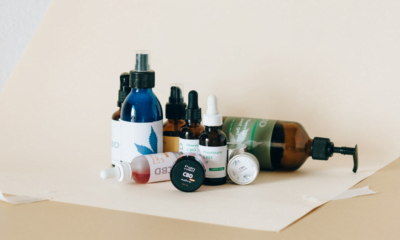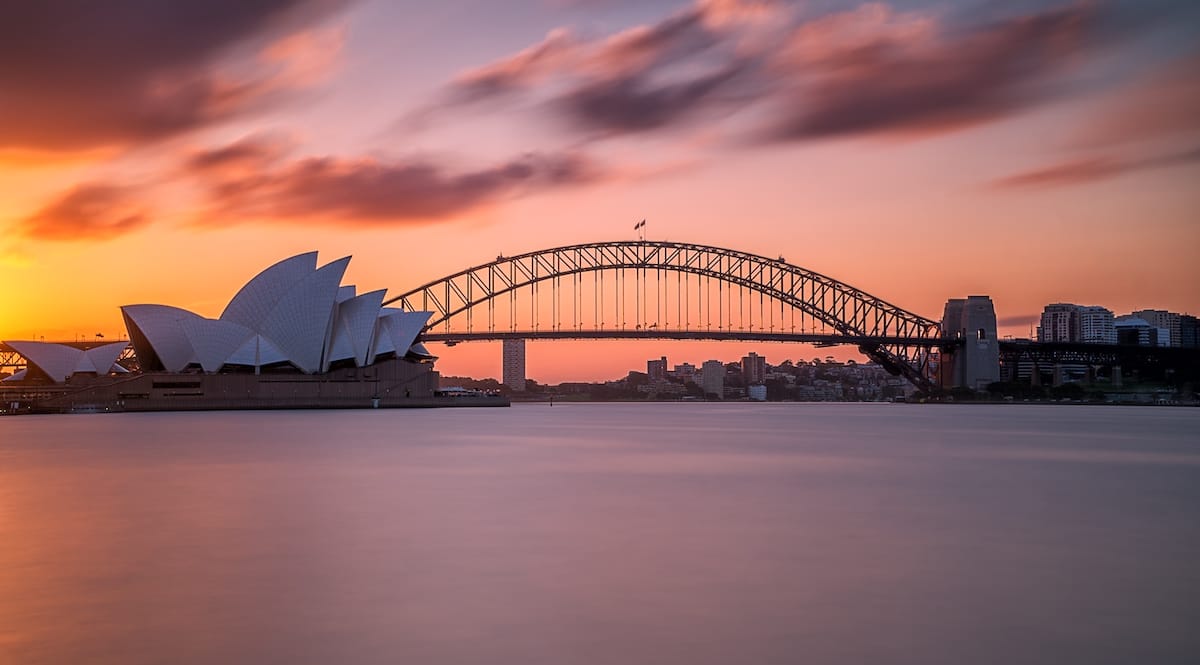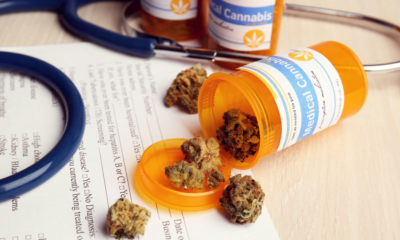Four years on from the legalistion of medical cannabis in Australia, record numbers of doctors are prescribing and access and awareness is at an all-time high, so why are hundreds of thousands of patients still self-medicating illicitly? Sarah Sinclair reports.
In 2016, following the legalistion of medical cannabis in Australia, the outlook was not a million miles away from the one facing the UK today.
It could offer a glimmer of hope for patients here then, that a recent analysis of the industry down under shows record numbers of doctors are now prescribing.
The latest report from FreshLeaf Analytics – including in-depth analysis of patients, products and pricing – was published in September, showing access to medical cannabis has never been more widespread.
The prescription market is expected to reach more than $150million by the end of 2012, with an estimated 30,000 patients now being prescribed cannabis-based medicines across the country – a significant jump from just over 10,000 in December 2019.
According to Professor Iain McGregor, academic director of the Lambert Initiative for Cannabinoid Therapeutics, based at the University of Sydney, the landscape has improved ‘exponentially’ in the last two years.
This is partly down to a more ‘streamlined’ Therapeutic Goods Administration (TGA) application process, removing the requirement for doctors to seek permission from the Federal and State Government. But also a change in views in the medical profession.
“In the early days patients couldn’t find a doctor to sponsor an application, because the doctors were quite rightly cautious, they hadn’t learned anything about cannabis in medical school,” says Prof McGregor.
“One of the key things that has promoted access is that the medical profession is becoming a lot more comfortable and better-educated around medicinal cannabis.”
The other factor is a significant drop in price. The cost of medicinal cannabis products has fallen by 75 percent since 2017, and according to the FreshLeaf report is now on a par with the black market.
Cassandra Hunt, managing director of FreshLeaf, told Cannabis Health: “The number of new products entering the market, and the degree of price drop is probably beyond levels we would have forecast 12 months ago.
“The report does not specifically track attitudes, however record numbers of doctors are prescribing, suggesting that acceptance of cannabis as a therapy is gradually increasing.”
The number of products available has doubled to 150 in the last year and is expected to exceed 300 by the end of 2021. This increase in competition has forced down prices.
According to the report, patients buying legal cannabis products are now spending the same as those accessing it illicitly, putting Australia in line with more mature markets such as Canada.
However, Cassandra added: “As medicinal cannabis products are not subsidised by the Government prices do appear expensive in comparison with subsidised medicine.”
This might go some way to explaining why, despite the increase in access, around 570,000 Australians are still self-medicating illicitly.
Desperate measures
The results from the Cannabis As Medicine Survey (CAMS:18) conducted by staff at the Discipline of Addiction Medicine in conjunction with the Lambert Initiative, show that the majority of medical cannabis patients are using illicitly, with only 2.7 percent of respondents accessing legal products.
The Lambert Initiative itself was founded by philanthropist Michael Lambert, who was forced to break the law to access medical cannabis for his severely epileptic daughter.
“We can pat ourselves on the back and say that we’ve got more official patients than the UK does, but there’s still this huge unmet need in the community where people are using illicit products of unknown composition, often to treat very serious medical conditions,” Prof McGregor says.
“As well as trials, we have an advocacy role to try and promote access for patients to ensure that the needy and suffering can access these products without any problem.”
The CAMS:18 survey asks patients their reasoning for using cannabis illicitly, with many saying they can’t find a doctor to help them with an application.
Prof McGregor continued: “Traditionally, having a conversation with a medical professional has been very difficult, because we’ve had some of the leading colleges in Australia come out with very strong anti-cannabis messages.
“Our College of Physicians came out urging great caution about cannabis and our College of Anesthesiology and Pain Medicine specialists is also very dismissive.”
On the frontline
GP’s however, are more open-minded, with almost 2,000 now prescribing across the country.
“We carried out a survey of GPs a couple of years ago which showed the majority of them were in favour of medicinal cannabis,” he said.
“GPs are generally quite interested and more open-minded. I think that’s because they are the ones on the frontline of chronic unremitting illness. They see the carnage caused by opioids and all that all the prescription meds that they prescribed routinely.”
Chrissie Butler, is a palliative care support worker and assistant nurse in Queensland, as well as a medical cannabis patient herself.
“There is definitely a stigma still, especially in the medical profession although it is getting better,” she said.
“If a doctor won’t prescribe or listen to a patient about medical cannabis, I always tell them to find another doctor, because they are making a moral judgement not a clinical one.”
In her line of work Chrissie sees a broad spectrum of patients using both legally and illicitly.
“We deal with patients from all walks of life – I’ve got 90-year-olds using cannabis for cancer pain – and I see quite a few people who are legally prescribed medical cannabis, as well as black market users.”
She added: “I always encourage people to go the legal route, because you know you’re getting a quality product, but when people are desperate they will source it in any way they can.”
The devil’s in the detail
Where Australia could be seen to be lagging behind the likes of the UK, US and Europe, is in CBD products, with patients currently only able to access them through a prescription.
In September the TGA announced an interim decision to allow over the counter access to low-dose CBD products from next year. This has been welcomed by the sector, with around 20 percent of the products available falling into this category.
However, Prof McGregor has warned that the ‘devil will be in the detail’.
“We have our suspicions that it’s going to be difficult to get products registered for over the counter access, but in principle, it’s a very welcome development,” he said.
“At the moment it’s estimated that around 20 percent of patients having to get CBD prescriptions are in that low-dose range that can be quite easily serviced by over the counter products.”
While the regulations could be viewed as ‘nannyism’ by some, they have made Australia a favourable place for clinical trials, with around 60 ongoing trials, many with overseas sponsors.
Equally, many products are now being derived from raw materials that are increasingly being cultivated and produced on a large scale.
According to the FreshLeaf report, 2021 could be ‘significant in defining what a healthy medical cannabis industry looks like’.
“The last 12 months has seen huge change in the industry. Record numbers of new products, rapid price declines and new regulations that will improve access and reduce patient prices,” Cassandra commented.
“In the next 12 months we expect the market to continue to grow, generating in excess of A$150M in sales next year.
“We also expect significant consolidation as the number of players and product companies in the sector is excessive for the size of the market. Some Australian players will start to report meaningful revenues from overseas sales, mostly to Europe.”
Looking towards full legalistion?
FreshLeaf also speculated that a need for new taxable revenues could lead to a discussion about the legalisation of cannabis for recreational use.
As well as having recently been awarded $1.7 million to study the effectiveness of cannabidiol for treating chronic pain, the Lambert Initiative currently has ongoing studies into the impact of cannabis use on driving.
Is this in anticipation of a future where cannabis is fully legalised?
Prof McGregor added: “In Australia we still arrest something like 70,000 people a year for petty cannabis offences and there’s a lot of concern about the damage that does to people’s wellbeing, and ultimately who benefits from arresting small time users and people growing for compassionate purposes?
“It’s inevitable that something has got to give, but let’s solve the problems in the medical cannabis sector first and then we can go down the recreational path.”

 News6 months ago
News6 months ago
 News6 months ago
News6 months ago
 News6 months ago
News6 months ago
 Science5 months ago
Science5 months ago
 Industry5 months ago
Industry5 months ago
 News6 months ago
News6 months ago
 Medical cannabis6 months ago
Medical cannabis6 months ago
 News5 months ago
News5 months ago












